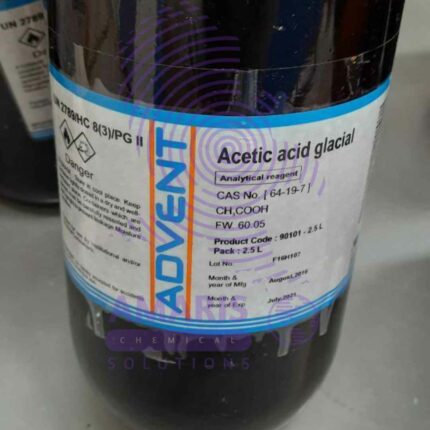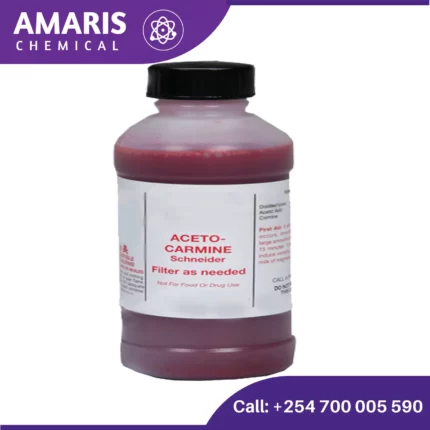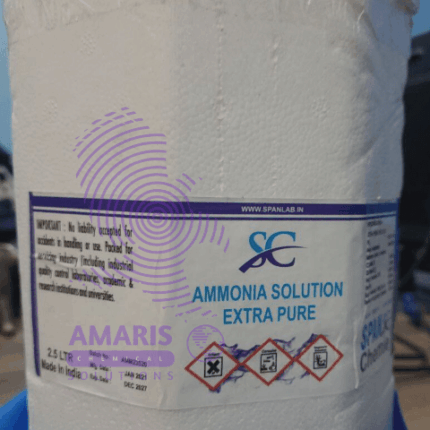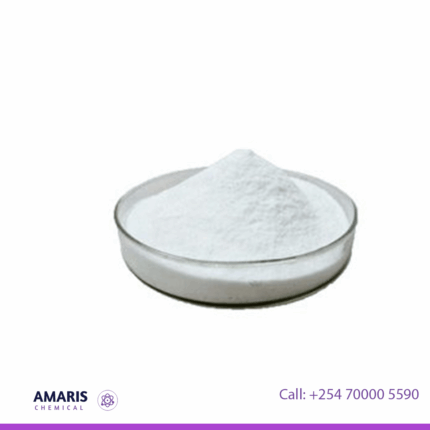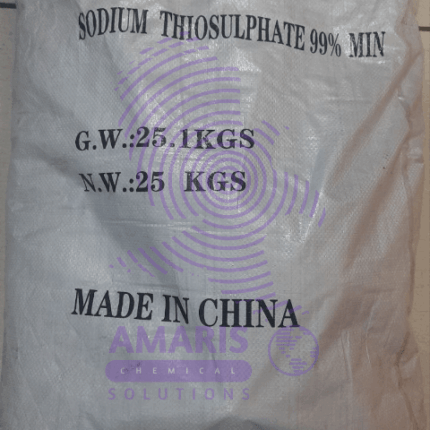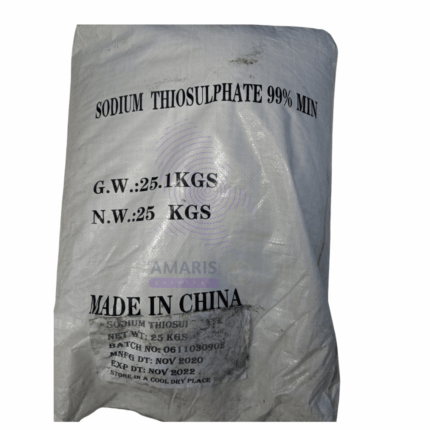Ammonium Acetate 25kgs
$8,500.00 Original price was: $8,500.00.$8,000.00Current price is: $8,000.00.
Whatsapp Order
Ammonium acetate is a chemical compound with the formula NH4CH3CO2. It is a white, crystalline solid with a vinegar-like odor. It is commonly used in various laboratory applications, such as in molecular biology and analytical chemistry. It can act as a source of acetate ion in reactions and is often used as a buffer solution in biochemical and molecular biology research. Additionally, it is sometimes used in the manufacture of other chemicals and as a food additive.
SKU:
ACS98834CHEM0
Category: Analytical Reagents
Description
Ammonium acetate
- Buffer Solution: It is commonly used as a buffering agent in molecular biology and biochemistry experiments. Its buffering capacity is particularly useful in maintaining a stable pH environment, especially in the range of 3.8 to 5.8.
- LC-MS Solvent: Ammonium acetate is often used as a mobile phase additive in liquid chromatography coupled with mass spectrometry (LC-MS). It helps improve ionization efficiency and enhances the resolution of analytes.
- Chemical Synthesis: It serves as a source of acetate ions in organic synthesis. It can be employed in various reactions such as acetylation, amidation, esterification, and as a catalyst in some reactions.
- Desiccant: Due to its hygroscopic nature, it is used as a desiccant to dry organic solvents and other compounds.
- Food Additive: In the food industry, it is used as an acidity regulator, buffering agent, and flavoring agent. It is generally recognized as safe (GRAS) by regulatory authorities when used in food products within specified limits.
- Preservative: Ammonium acetate can be used as a preservative in certain food products, helping to extend shelf life by inhibiting microbial growth.
- Pharmaceuticals: It may be used in certain pharmaceutical formulations as an excipient or for pH adjustment purposes.
- Dyeing and Printing: In textile industries, it can be used in dyeing and printing processes as an acidic buffer.
- Electroplating: Ammonium acetate can be used in electroplating processes as an electrolyte.
- Laboratory Reagent: It is a common reagent in various laboratory procedures, including DNA/RNA extraction, protein precipitation, and chromatography.
Related products
Acetic Acid 2.5litre
Acetic acid is an organic acid with the chemical formula CH3COOH, also known as ethanoic acid. It is a colorless liquid with a pungent, sour taste and a distinctive vinegar-like odor. Acetic acid is an important industrial chemical used in the production of various products, including solvents, plastics, textiles, and food additives. It is also the main component of vinegar, which is commonly used as a condiment and preservative in cooking and food preparation.
Aceto Carmine 100 ml
Aceto carmine is a staining solution used primarily in microscopy to highlight cellular components. It is a mixture of carmine dye and acetic acid. Here’s an overview of its properties, preparation, and uses:
Properties
- Color: Red to purplish-red.
- Solubility: Soluble in water and ethanol.
- Staining Characteristics: Stains chromatin and cytoplasmic components, providing contrast for better visualization under a microscope.
Preparation
- Ingredients:
- Carmine dye: A natural red dye extracted from the cochineal insect.
- Acetic acid: A colorless liquid organic compound with a pungent smell.
- Procedure:
- Dissolve a specific amount of carmine powder in hot distilled water.
- Add glacial acetic acid to the solution.
- Filter the mixture to remove any undissolved particles.
Aluminum Ammonium Sulphate
Aluminum ammonium sulfate, also known as ammonium alum or just alum, is a chemical compound with the formula (NH4)Al(SO4)2·12H2O. It's a white crystalline solid commonly used in water purification, leather tanning, and as a mordant in dyeing textiles.
In water purification, alum acts as a coagulant to remove impurities by causing suspended particles to clump together, making it easier for filtration to remove them. In leather tanning, it helps to stabilize the leather by tightening the collagen fibers. And in dyeing textiles, alum helps the dye adhere to the fabric.
However, it's important to note that excessive exposure to aluminum compounds like alum can be harmful, so it's typically used with caution and proper safety measures.
Ammonia Solution 2.5litres
An ammonia solution is a solution of ammonia (NH3) gas dissolved in water. It is a clear, colorless liquid with a pungent odor and a basic pH. The concentration of ammonia in the solution can vary, and is typically expressed in terms of percent by weight or by volume.
Ammonia solutions are commonly used in a variety of applications, including cleaning agents, fertilizers, and as a precursor to other chemicals. They are also used in industrial processes such as refrigeration, gas purification, and water treatment. Ammonia solutions can be dangerous if not handled properly, as they are highly corrosive and can release toxic fumes if mixed with certain chemicals
Ammonium Chloride 500gm
Ammonium chloride is an inorganic compound with the chemical formula NH4Cl. It is a white crystalline salt that is highly soluble in water and has a salty taste. Ammonium chloride is often used in various industrial and laboratory applications, including as a flux in soldering, as a nitrogen source in fertilizers, and as a component in dry cell batteries. It can also be used in medicine as an expectorant to help thin and loosen mucus in the respiratory system
Ammonium Nitrate 500gm
Potassium Lactate
Sodium Thiosulphate 25kg
Sodium thiosulfate (Na2S2O3) is an inorganic compound that is commonly used as a photographic fixer, as well as in medical and industrial applications. It is a white crystalline powder that is soluble in water and has a mild odor. In photography, sodium thiosulfate is used to remove unexposed silver halide from photographic prints and negatives, making the image permanent. In medicine, it is used as an antidote for cyanide poisoning, and in industrial applications, it is used as a reducing agent, a dechlorinating agent, and in water treatment processes.




